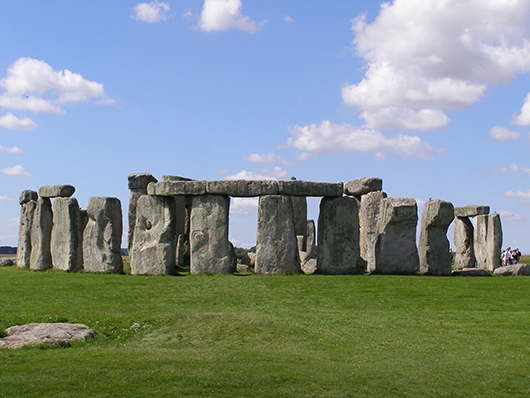
The mysterious circle of standing stones, on Salisbury Plain in southwest England, is one of the most iconic ancient sites in Europe.
However, thanks to decades of disputes and indecision, it has never offered much of a welcome beyond a parking lot – something which the new £27 million ($44 million, 32 million euro) visitor center, museum and exhibition space aims to put right.
“It has been described a national disgrace by our politicians that Stonehenge, such an incredible monument, has been so badly treated,” said Simon Thurley, chief executive of English Heritage, the public body which runs the site.
“But the good news is: no longer,” he told AFP, thanks to the project, funded by grants, private finance and English Heritage itself.
The new center is invisible from Stonehenge and designed to blend in with the landscape. Its light roof is propped up by 211 slender steel poles, leaning like trees.
It is opening in time for the winter solstice on Saturday.
Thousands of pagan revelers are expected to witness the rising sun appearing between the stones in alignment, just as for the June 21 summer solstice.
A UNESCO world heritage site, Stonehenge is one of the most impressive prehistoric megalithic monuments anywhere due to its size, sophisticated concentric plan and architectural precision.
The new museum traces the site’s construction, using models and video screens. Stonehenge was built in stages, from around 3,000 B.C. to 2,300 B.C.
The bluestones were transported from the Preseli Hills in Pembrokeshire, southwest Wales, some 150 miles (240 kilometres) away.
But visitors hungry for answers on what it’s all about are warned by a giant panel saying “there will always be debate about its meaning.”
The main theories these days are a ceremonial burial site or a center of healing.
The new visitor center is a mile and a half (2.5 kilometres) from the site. A shuttle service – wagons pulled by an all-terrain vehicle – transports tourists between the two.
Right by the monument, the tired 1960s facilities – portable toilets, the old buildings housing the tills, a small shop and a small cafe – are now out of service.
Meanwhile, the parking lot and access road that cut right across Stonehenge’s processional avenue have been grassed over.
Stonehenge stands in the rolling green fields of Wiltshire, but the pastoral scene is somewhat diminished by the sight and sound of the A303 trunk road some 200 meters away. One of the main routes between London and southwest England, traffic on the single-lane road shoots past at 60 miles per hour.
The highway “kind of demystifies it a little bit,” said Shayne Adcock, a 21-year-old Danish tourist. He said it was “awkward” that they did not move the road as part of the development.
A tunnel was proposed but the cost – estimated at nearly £500 million – was deemed too expensive and the idea was abandoned, said English Heritage spokeswoman Renee Fok.
Entry prices for Stonehenge have now nearly doubled from £8 to £14.90.
English Heritage says the hike is justified by access to the museum, a snazzy cafe and a souvenir shop which sells goodies such as teddy bears and jam.
ADDITIONAL IMAGE OF NOTE


